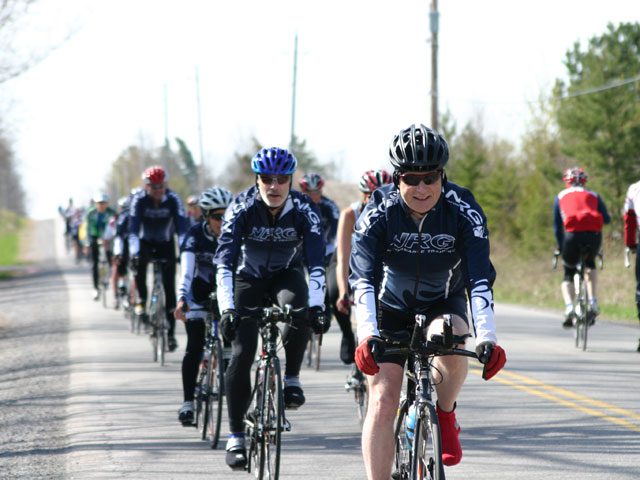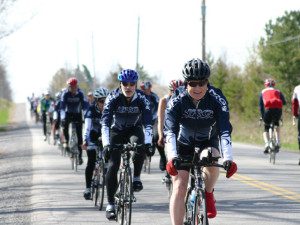Better Bike Handling for a Faster Ride

“Triathletes are poor bike handlers.” We often hear this, but It doesn’t have to be the case. The truth is many triathletes are introduced to riding by other triathletes who don’t come from a group riding background. When I started riding I rode with a local roadie group. That was a great introduction. In order for the group to be safe, every rider needs to know what’s expected of them.
Many athletes fail to recognize how beneficial bike handling skills are to overall performance on the bike. Good bike handling skills enable you to be more relaxed on your bike, which means a lower energy cost at any given power output. Knowing when and how to brake or how fast to take a corner is essentially free speed. The good news is that bike handling skills are trainable. As with the swim and run, if you put in the time, you can get better.
How to Get Better
The main way to improve is to spend more time outside on the bike. Too many athletes spend too much time riding inside (usually from October to April). This means it’s very hard to progress from season to season. Change that by going to a quiet parking lot and use the painted parking lines as a guide to help you practice 180 degree turnarounds (like the ones you encounter in many races). Pick a point to turn around and practice staying with the lines. As you get better, you can make the turning space narrower and narrower until you can do a 180-degree turn within the width of one parking spot. To practice cornering on your own, find a quiet street with a 90-degree corner that you can see around and progressively build speed as your comfort increases.
Keys to Taking a Corner Without Losing Excessive Speed
Braking
Do the heavy braking while still in a straight line before getting to the turn. Once turning, riders should only feather the brakes and let off the brakes while exiting the turn, starting to pedal and accelerate.
Technique Keep the outside pedal down and maintain pressure on it (think of pushing on the pedal as though driving the tires into the ground for more grip). Always look 50 m ahead. Don’t look right in front of the front wheel.
Line
The best line for corners is to start wide then cut in at the apex of the corner then out wide to exit the turn. Of course it is essential to keep eyes on traffic and never to cross the centre line , either heading into or out of the turn. The bike can handle far more than we tend to think it can. A great exercise is to ride on the grass with some friends and practice bumping and touching elbows to see how that feels while going slow and with a softer landing should you happen to go down. The key is to keep arms bent and loose so that any bumping is absorbed by them.
Even bike maintenance plays a role in making bike handling easier. Make sure that your bike is in good working order. Good brakes that are set up properly make a huge difference; it will allow you to brake with confidence and let you carry more speed into corners and on descents.
Group Riding
In order to ride safely the group needs to work together and you should be riding either single or double file, but never three or more abreast. Be predictable and always hold your line. The person leading sets the tone for those behind. Drifting back then having to accelerate to catch up, or weaving side to side, will endanger other riders, particularly when there are cars around. Good bike handling skills can make a big difference in performance. They help riders be more energy efficient and confident. With no purchase required, it really is free speed.
Nigel Gray is head coach of NRG Performance Training and has been coaching for the last 15 years and riding his bike year round in all conditions and terrain for more than 25 years.

